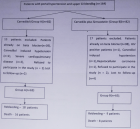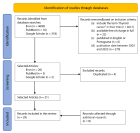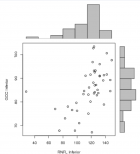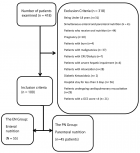Abstract
Research Article
Gestational hypercholesterolemia helps detect familial hypercholesterolemia and prevent late pregnancy complications
Josef Hyánek*, František Pehal, Kseniya Dryahina, Ladislava Dubská, Blanka Míková, Lada Gombíková, Miroslav Průcha, Stanislav Kubů, Petra Haláčková and Jaroslav Feyreisl
Published: 02 July, 2019 | Volume 2 - Issue 2 | Pages: 079-089
Introduction: In this retrospective study, we comment on the cause and diagnostic potential of the elevated serum total cholesterol and some non-cholesterol sterols in a population of healthy pregnant women from Prague, Czech Republic.
Methods: Based on a total of 21,000 clinical biochemistry tests of healthy pregnant women with hypercholesterolemia observed during pregnancy, a testing group of 84 women with a total cholesterol (TC) above 7.0 mmol/l was established to analyze their non-cholesterol sterols (NCS) by Gas Chromatography–Mass Spectrometry. Lathosterol (Lat) and desmosterol (Des) were evaluated as markers of endogenous cholesterol synthesis, whereas campesterol (Cam) and sitosterol (Sit) were analysed as markers of intestinal absorption.
Results: In the basic population, the frequency of gestational hypercholesterolemia with the serum TC levels > 7.0mmol/l was 1 to 136.The mean values were: TC 6.8 mmol/l, LDL-C 4.6 mmol/l, and HDL-C 2.2 mmol/l. In the selected testing group of 84, the mean values were: Lat 7.8+/-1.7 μmol/l, Des 4.7+/-0.9 μmol/l, Cam 9.8+/-2.6 μmol/l, and Sit 9.6+/-3.8 μmol/l. Lat correlated with TC (r = 0.53), LDL-C (r = 0.36), and non-HDL-C (r = 0.35). No such correlations were observed for Cam or Sit.
Conclusion: Our findings prove that gestational hypercholesterolemia is caused by increased endogenous cholesterol synthesis via lathosterol. Subsequently, we demonstrate how a single cholesterol test taken in the fifth to sixth month gestation can efficiently help detect familial hypercholesterolemia, and prevent related late pregnancy circulatory complications.
Read Full Article HTML DOI: 10.29328/journal.cjog.1001026 Cite this Article Read Full Article PDF
Keywords:
Hypercholesterolemia during pregnancy; Gestational hypercholesterolemia; Familial hypercholesterolemia; Non-cholesterol sterols; Lathosterol; Desmosterol; Campesterol; Sitosterol
References
- Feingold KR, Wiley T, Moser AH, Lear SR, Wiley MH.De novo cholesterogenesis in pregnancy. J Lab Clin Med. 1983; 101: 256-263. Ref.: http://bit.ly/2KRPVVI
- Hyánek J. Hypercholesterolemia in pregnancy – pathobiochemical and pathophysiological implication for atherosclerosis and evaluation in metabolic surgery [in Czech with English summary]. Klinická Biochemie a Metabolismus. 2013; 21: 208-214. Ref.: http://bit.ly/2XCE6c4
- Desoye G, Schweditsch MO, Pfeiffer KP, Zechner R, Kostner GM. Correlation of hormones with lipid and lipoprotein levels during normal pregnancy and postpartum. J Clin Endocrinol Metab. 1987; 64: 704-712. Ref.: http://bit.ly/2KW6BLQ
- Amundsen AL, Khoury J, Iversen PO, Bergei C, Ose L, et al. Marked changes in plasma lipids and lipoproteins during pregnancy in women with familial hypercholesterolemia. Atherosclerosis. 2016; 189: 451‑ Ref.: http://bit.ly/2YrwSVx
- Herrera E, Amusquivar E, López-Soldado I, Ortega H. Maternal lipid metabolism and placental lipid transfer. Horm Res. 2006; 65(supp 3): 59-64. Ref.: http://bit.ly/2xrmAbT
- Woollett LA. Maternal cholesterol in fetal development: transport of cholesterol from the maternal to the fetal circulation 1-5. The Am J Clin Nutr. 2006; 82: 1155-1161. Ref.: http://bit.ly/2FMioIt
- Chiang C, Litingtung Y, Lee E, Young KE, Corden JL, et al. Cyclopia and defective axial patterning in mice lacking Sonic hedgehog gene function. Nature. 1996; 383: 407-413. Ref.: http://bit.ly/2NsMsiH
- Bertrand N, Dahmane N. Sonic hedgehog signalizing in forebrain development and its interactions with pathways that modify its effects. Trends Cell Biol. 2006; 16: 597-605. Ref.: http://bit.ly/31Xi1Ei
- Herman GE. Disorders of cholesterol biosynthesis: prototypic metabolic malformations syndromes. Hum Mol Genet. 2003; 12(sup 1, 2): R75-R88. Ref.: http://bit.ly/2XHK8bg
- Hoffmann GF, Nyhan WL, Zschocke J, Kahler SG, Mayatepek E. Inherited metabolic diseases. Philadelphia: Lippincott Williams & Wilkins. 2002. Ref.: http://bit.ly/3240gDt
- Porter FD, Herman GE. Malformation syndromes caused by disorders of cholesterol synthesis. J Lipid Res. 2010; 52: 6-34. Ref.: http://bit.ly/321OSrC
- Palinski W. Maternal-fetal cholesterol transport in the placenta: Good, bad, and target for modulation. Circ Res. 2009; 104: 569-571. Ref.: http://bit.ly/2KScvxp
- Napoli C, Glass CK, Witztum JL, Deutsch R, D'Armiento FP, et al. Influence of maternal hypercholesterolaemia during pregnancy on progression of early atherosclerotic lesions in childhood: Fate of Early Lesions in Children (FELIC) study. Lancet. 1999; 354: 1234-41. Ref.: http://bit.ly/2xrJtw1
- Bartels Ä, O’Donoghue K. Cholesterol in pregnancy: A Review of knowns and unknowns. Obstet Med. 2011; 4: 147–151. Ref.: http://bit.ly/323sL45
- Martin U, Davies C, Hayavi S, Hartland A, Dunne F. Is normal pregnancy atherogenic? Clin Sci (Lond). 1999; 96: 421-425. Ref.: http://bit.ly/2KSiYbA
- Vogt A. The genetics of familial hypercholesterolemia and emerging therapies. Appl Clin Genet. 2015; 8: 27-36. Ref.: http://bit.ly/2RM6qn1
- Wiegman A, Gidding SS2, Watts GF3, Chapman MJ4, Ginsberg HN, et al. Familial hypercholesterolaemia in children and adolescents: Gaining decades of life by optimizing detection and treatment. Eur Heart J. 2015; 36: 2425-2437. Ref.: http://bit.ly/32131VX
- Nordestgaard BG1, Chapman MJ, Humphries SE, Ginsberg HN, Masana L, et al. Familial hypercholesterolaemia is underdiagnosed and undertreated in the general population: guidance for clinicians to prevent coronary heart disease: Consensus statement of the European Atherosclerosis Society. Eur Heart J. 2013; 34: 3478-3490. Ref.: http://bit.ly/2Nqvlhm
- Glueck CJ, Christopher C, Tsang RC, Mellies MJ. Cholesterol-free diet and the physiologic hyperlipidemia of pregnancy in familial hypercholesterolemia. Metabolism. 1980; 29: 949-955. Ref.: http://bit.ly/2KVwTxB
- Salameh WA1, Mastrogiannis DS. Maternal hyperlipidemia in pregnancy. Clinical obstetrics and gynecology. 1994; 37: 66-77. Ref.: http://bit.ly/2XqUxsQ
- Toleikyte I, Retterstøl K, Leren TP, Iversen PO. Pregnancy outcomes in familial hypercholesterolemia: A register-based study. Circulation. 2011; 124: 1606-1614. Ref.: http://bit.ly/2ZYIK1A
- Spracklen CN, Smith CJ, Saftlas AF, Robinson JG, Ryckman KK. Maternal hyperlipidemia and the risk of preeclampsia: A Meta-analysis. Am J Epidemiol. 2014; 180: 346-358. Ref.: http://bit.ly/2KS7tkF
- Hyánek J, Pehal F, Dubská L, Míková B, Gombíková L, et al. Hypercholesterolemia during pregnancy is caused by increased endogenous cholesterol synthesis. Let’s use it for screening of familial hypercholesteroemias too! Journal of Nutritional Therapeutics. 2018; 6: 79-83. Ref.: http://bit.ly/2LD1JKW
- Wadsack C, Hammer A, Levak-Frank S, Desoye G, Kozarsky KF, et al. Selection cholesterol ester uptake from high density lipoprotein by human first trimester and villous trophoblast cells. Placenta. 2003; 24: 131-143. Ref.: http://bit.ly/305EOvS
- Bhattacharjee J1, Ietta F, Giacomello E, Bechi N, Romagnoli R, et al. Expression and localisation of ATP binding cassette transport A1 (ABCAl) in the first trimester and term human placenta. Placenta. 2010; 31: 423-430. Ref.: http://bit.ly/2XjLBFy
- Stefulj J, Panzenboeck U, Becker T, Hirschmugl B, Schweinzer C, et al. Human endothelial cells of the placental barrier efficiently deliver cholesterol to the foetal circulation via ABCA1 a ABCG-1. Circ Res. 2009 104: 600-608. Ref.: http://bit.ly/2NrMqYo
- Beigel Y, Bar J, Cohen M, Hod M. Pregnancy outcome in familial homozygous hypercholesterolemic females treated with long-term plasma exchange. Acta obstetricia et gynecologica scandinavica. 1998; 77: 603-608. Ref.: http://bit.ly/2J3R4Hw ss
- Anedda S, Mura S, Marcello C, Pintus P. HELP LDL-apheresis in two cases of familial hypercholesterolemic pregnant women. Transfus Apher Sci. 2011; 44: 21-24. Ref.: https://tinyurl.com/y43adqp8
- Bláha M, Lánská M, Bláha V, Boudyš L, Žák, P. Pregnancy in homozygous familial hypercholesterolemia: Importance of LDL-apheresis. Atheroscler Suppl. 2015; 18: 134-139. Ref.: https://tinyurl.com/yysgfv5p
- Eapen DJ, Valiani K, Reddy S, Sperling L. Management of familial hypercholesterolemia during pregnancy: case series and discussion. J Clin Lipidol. 2012; 6: 88-91. Ref.: https://tinyurl.com/y6z9srmb
- Kusters DM, Homsma SJM, Hutten BA, Twickler M, Avis HJ, et al. Dilemmas in treatment of women with familial hypercholesterolaemia during pregnancy. Neth J Med. 2010; 68: 299-303. Ref.: https://tinyurl.com/yykheef8
- Kempten HJM, Glatz JFC, Gevers Leuven JA, van der Voort HA, Katan MB. Serum lathosterol concentration is an indicator for whole-body cholesterol synthesis in humans. J Lipid Res. 1988; 29: 1149-1155. Ref.: https://tinyurl.com/y4r8egpr
- Teunissen CE, de Vente J, von Bergman K, Bosma H, van Boxtel MPJ, et al. Serum cholesterol precursors and metabolites and cognitive performance in an aging population. Neurobiol Aging. 2003; 24: 147-155. Ref.: https://tinyurl.com/y5kbqh55
- Miettinen TA, Gylling H. Effect of statins on noncholesterol levels: Implication for use of plant stanols and sterols. Am J Cardiol. 2005; 96: 40D-46D. Ref.: https://tinyurl.com/y435nqfd
- Hyánek J, Pehal F, Dubská L, Dvořáková J, Maťoška V, et al. Noncholesterol sterols in healthy children and during the dietary treatment of hypercholesterolemias. [in Czech with English summary]. Česko-slovenská pediatrie. 2006; 61: 493-501.
- Lupatelli G, Pirro M, Siepi D, Mannarino MR, Roscini AR, et al. Non-cholesterol sterols in different forms of primary hyperlipidemias. Nutr Metab Cardiovasc Dis. 2012; 22: 231-236. Ref.: https://tinyurl.com/y2nhgpt9
- Vrablík M, Vaclová M, Tichý L, Soska V, Bláha V, et al. Familial hypercholesterolemia in the Czech Republic: More than 17 years of systematic screening within the MedPed Project. Physiol Res. 2017; 66: S1-S9. Ref.: https://tinyurl.com/yxrvlbal
- Hyánek J, Pehal F, Dubská L, Martiníková V, Privarová J, et al. Lathosterol and noncholesterol sterols in routine use for the differentiation and monitoring of dietary and drug induced treatment of hypercholesterolemias in children and adolescents. Journal of nutritional therapeutics. 2014; 3: 1-12.
- Mudd LM, Holzman CB, Catov JM, Senagore P, Evans R. Maternal lipids at mid-pregnancy and the risk of preterm delivery. Acta Obstet Gynecol Scand. 2012; 91: 726-735. Ref.: https://tinyurl.com/y2st443j
- Catov JM, Bodnar LM, Kevin E. Early pregnancy lipid concentrations and spontaneous preterm birth. Am J Obstet Gynecol. 2007; 197: 610-617. Ref.: https://tinyurl.com/y4n92nvt
- Edison RJ, Berg K, Remaley A, Kelley RI, Rotimi C. Adverse birth outcome among mothers with low serum cholesterol. Pediatrics. 2007; 120: 723-733. Ref.: https://tinyurl.com/y2t69m7e
- Smith CJ, Baer RJ, Oltman SP, Breheny PJ, Bao W, et al. Maternal dyslipidemia and risk for preterm birth. PLOS One. 2018; 13: e0209579. Ref.: https://tinyurl.com/yykvhfbq
- Khoury J, Amundsen AL, Tonstad S, Henriksen T, Ose L. Evidence for impaired physiological decrease in the uteroplacental vascular resistance in pregnant women with familial hypercholesterolemia. Acta Obstet Gynecol Scand. 2009; 88: 222-226. Ref.: https://tinyurl.com/yxfszygb
- Fuenzalida B, Sobrevia B, Cantin C, Carvajal LP, Salsoso R, et al. Maternal supraphysiological hypercholesterolemia associates with endothelial dysfunction of the placental microvasculature. Sci Rep. 2018; 8: 7690. Ref.: https://tinyurl.com/yxewc5fb
- Palinski W, Napoli C. Pathophysiolocial events during pregnancy influence development of atherosclerosis in humans. Trends Cardiovasc Med. 1999; 9: 205-214. Ref.: https://tinyurl.com/yyfhjhjy
- Palinski W, Dármiento FP, Vitzum JL, de Nigris FM, Casanada F, et al. Maternal hypercholesterolemia and treatment during pregnancy influence the long-term progression of atherosclerosis in offspring of rabbits. Circ Res. 2001; 89: 991-996. Ref.: https://tinyurl.com/yxdeonjs
- Palinski W, Napoli C. The fetal origins of atherosclerosis: maternal hypercholesterolemia, and cholesterol-lowering or antioxidant treatment during pregnancy influence in utero programming and postnatal susceptibility to atherogenesis. FASEB J. 2002; 16: 1348-1360. Ref.: https://tinyurl.com/yxqbv966
- deAssis SM, Seguro AC, Helou CMB. Effects of maternal hypercholesterolemia on pregnancy and development of offsprings. Pediatric Nephrology. 2003; 18: 328-334.
- Goharkhay N, Tamayo E, Yin H, Hankins GD, Saade GR, et al. Maternal hypercholesterolemia leads to activation of endogenous cholesterol synthesis in the offspring. Am J Obstet Gynecol. 199: 273.e1-273.e6. Ref.: https://tinyurl.com/y6eu3a4m
- van den Graaf A, Vissers MN, Gaudet D, Brisson D, Sivapalaratnam S. Dyslipidemia of mothers with familial hypercholesterolemia deteriorates lipids in adult offspring. Arterioscler Thromb Vasc Biol. 2010; 30: 2673-2677. Ref.: https://tinyurl.com/y2nuf6zr
- Dumolt JH, Radhakrishnan SK<, Moghadasian MH, Le K, Patel MS, et al. Maternal hypercholesterolemia enhances oxysterol concentration in mothers and newly weaned offspring but is attenuated by maternal phytosterol supplementation. J Nutr Biochem. 2018; 52: 10-17. Ref.: https://tinyurl.com/y6eaztyb
- Narverud I, van Lennep JR, Christensen JJ, Versmissen J, Gran JM, et al. Maternal inheritance does not predict cholesterol levels in children with familial hypercholesterolemia. Atherosclerosis. 2015; 243: 155-160. Ref.: https://tinyurl.com/y3gd84dw
- Kenis I, Tartakover-Matalon S, Cherepnin N, Drucker L, Fishman A, et al. Simvastatin has deleterious effects on human first trimester placental explants. Hum Reprod. 2005; 20: 2866-2872. Ref.: https://tinyurl.com/y4sxdq4e
- Forbes K, Shah VK, Siddals K, Gibson M, Aplin JD, et al. Statins inhibit insulin-like growth factor action in first trimester placenta by altering insulin-like growth factor 1 receptor glycosylation. Mol Hum Reprod. 2015; 21: 105–114. Ref.: https://tinyurl.com/y4x9rkef
- Khoury J, Henriksen T, Christophersen B, Tonstad, S. Effect of a cholesterol-lowering diet on maternal cord, and neonatal lipids, and pregnancy outcome: A randomized clinical trial. Am J Obstet Gynecol. 2005; 193: 1292-1301. Ref.: https://tinyurl.com/y4tc5uub
- Karalis DG, Hill AN, Clifton S, Wild RA. The risks of statin use in pregnancy: A systematic review. J Clin Lipidol. 2016; 10: 1081-1090. Ref.: https://tinyurl.com/yybgbol5
- Botha TC, Pilcher GJ, Wolmarans K, Blom DJ, Raal b FJ. Statins and other lipid-lowering therapy and pregnancy outcomes in homozygous familial hypercholesterolaemia: A retrospective review of 39 pregnancies. Atherosclerosis. 2018; 277: 502-507. Ref.: https://tinyurl.com/y6htv3zh
- Ofori B, Rey E, Bérard S. Risk of congenital anomalies in pregnant users of NSAIDs. British journal of clinical pharmacology. 2007; 64: 496-509.
- Avis HJ, Hutten BA, Twickler MT, Kastelein JJP, van der Post J, et al. Pregnancy in women suffering from familial hypercholesterolemia: A harmful period for both mother and newborn? Curr Opin Lipidol. 2009; 20: 484-490. Ref.: https://tinyurl.com/y6rcv5w8
- Godfrey LM, Erramouspe J, Cleveland K. Teratogenic risk of statins in pregnancy. Ann Pharmacother. 2012; 46: 1419-1424. Ref.: https://tinyurl.com/y38az8rf
- Bateman BT, Hernandez-Diaz S, Fischer MA, Seely EW, Ecker JL, et al. Statins and congenital malformations: Cohort study. BMJ. 2015; 350: h1035. Ref.: https://tinyurl.com/y4dumxg4
- Nasioudis D, Doulaveris G, Kanninen TT. Dyslipidemia in pregnancy and maternal-fetal outcome. Minerva Ginecol. 2019; 71: 155-162. Ref.: https://tinyurl.com/y6zf9zad
- Brizzi P. Tonolo G, Esposito F, Puddu L, Dessole S, et al. Lipoprotein metabolism during normal pregnancy. American journal of obstetrics and gynecology. 1999; 181: 430-434.
Figures:

Figure 1
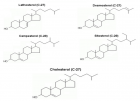
Figure 2

Figure 3
Similar Articles
-
Gestational hypercholesterolemia helps detect familial hypercholesterolemia and prevent late pregnancy complicationsJosef Hyánek*,František Pehal,Kseniya Dryahina,Ladislava Dubská,Blanka Míková,Lada Gombíková,Miroslav Průcha,Stanislav Kubů,Petra Haláčková,Jaroslav Feyreisl. Gestational hypercholesterolemia helps detect familial hypercholesterolemia and prevent late pregnancy complications. . 2019 doi: 10.29328/journal.cjog.1001026; 2: 079-089
Recently Viewed
-
Feature Processing Methods: Recent Advances and Future TrendsShiying Bai,Lufeng Bai*. Feature Processing Methods: Recent Advances and Future Trends. J Clin Med Exp Images. 2025: doi: 10.29328/journal.jcmei.1001035; 9: 010-014
-
Relationship between Vitamin D Deficiency and Lipopolysaccharides Porphyromonas gingivalis Bacteria in Stunting ChildrenErwin Gunawan*,Ria Puspitawati. Relationship between Vitamin D Deficiency and Lipopolysaccharides Porphyromonas gingivalis Bacteria in Stunting Children. Ann Biomed Sci Eng. 2024: doi: 10.29328/journal.abse.1001033; 8: 059-065
-
Addiction to self-strangulation: a case-reportAurely Ameller*,Yann Le Strat,Marion Cadranel,Celine Portalier, Caroline Dubertret. Addiction to self-strangulation: a case-report . J Addict Ther Res. 2017: doi: 10.29328/journal.jatr.1001003; 1: 016-021
-
Nanoencapsulated Extracts from Leaves of Bauhinia forficata Link: In vitro Antioxidant, Toxicogenetic, and Hypoglycemic Activity Effects in Streptozotocin-induced Diabetic MiceBárbara Verônica Cardoso de Souza, Alessandra Braga Ribeiro*, Rita de Cássia Meneses Oliveira, Julianne Viana Freire Portela, Ana Amélia de Carvalho Melo Cavalcante, Esmeralda Maria Lustosa Barros, Luís Felipe Lima Matos, Tarsia Giabardo Alves, Maria. Nanoencapsulated Extracts from Leaves of Bauhinia forficata Link: In vitro Antioxidant, Toxicogenetic, and Hypoglycemic Activity Effects in Streptozotocin-induced Diabetic Mice. Arch Pharm Pharma Sci. 2024: doi: 10.29328/journal.apps.1001063; 8: 100-115
-
Oral Suspension as Versatile Galenic Formulation in PediatryMauro Luisetto*, Almukthar N, Edbey K, Mashori GR, Fiazza C, Dona’ l, Cabianca L, Latyshev O. Oral Suspension as Versatile Galenic Formulation in Pediatry. Arch Pharm Pharma Sci. 2024: doi: 10.29328/journal.apps.1001062; 8: 091-099
Most Viewed
-
Evaluation of Biostimulants Based on Recovered Protein Hydrolysates from Animal By-products as Plant Growth EnhancersH Pérez-Aguilar*, M Lacruz-Asaro, F Arán-Ais. Evaluation of Biostimulants Based on Recovered Protein Hydrolysates from Animal By-products as Plant Growth Enhancers. J Plant Sci Phytopathol. 2023 doi: 10.29328/journal.jpsp.1001104; 7: 042-047
-
Sinonasal Myxoma Extending into the Orbit in a 4-Year Old: A Case PresentationJulian A Purrinos*, Ramzi Younis. Sinonasal Myxoma Extending into the Orbit in a 4-Year Old: A Case Presentation. Arch Case Rep. 2024 doi: 10.29328/journal.acr.1001099; 8: 075-077
-
Feasibility study of magnetic sensing for detecting single-neuron action potentialsDenis Tonini,Kai Wu,Renata Saha,Jian-Ping Wang*. Feasibility study of magnetic sensing for detecting single-neuron action potentials. Ann Biomed Sci Eng. 2022 doi: 10.29328/journal.abse.1001018; 6: 019-029
-
Pediatric Dysgerminoma: Unveiling a Rare Ovarian TumorFaten Limaiem*, Khalil Saffar, Ahmed Halouani. Pediatric Dysgerminoma: Unveiling a Rare Ovarian Tumor. Arch Case Rep. 2024 doi: 10.29328/journal.acr.1001087; 8: 010-013
-
Physical activity can change the physiological and psychological circumstances during COVID-19 pandemic: A narrative reviewKhashayar Maroufi*. Physical activity can change the physiological and psychological circumstances during COVID-19 pandemic: A narrative review. J Sports Med Ther. 2021 doi: 10.29328/journal.jsmt.1001051; 6: 001-007

HSPI: We're glad you're here. Please click "create a new Query" if you are a new visitor to our website and need further information from us.
If you are already a member of our network and need to keep track of any developments regarding a question you have already submitted, click "take me to my Query."







